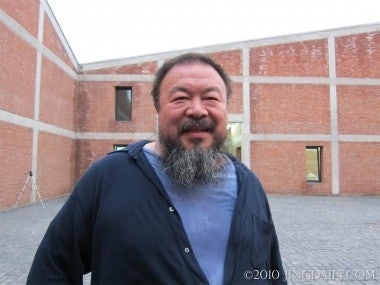Astronomer Yang Guangyu Looks To Honor Artist By Renaming 2001 Find#

Following his recent show at the São Paulo Biennale, the opening of his "Sunflower Seeds" installation at the Tate Turbine Hall in London, and his temporary house arrest in Beijing, of all places it looks like artist Ai Weiwei's name will show up next in outer space. According to a Ming Pao article (Chinese), Hong Kong-born Canadian astronomer Yang Guangyu (Bill Yeung) has "successfully applied" to have asteroid 83598 renamed "Ai Weiwei Star" (艾未未星). Yang was quick to tell the media that his decision to "devote the star" (献星) to Ai Weiwei was due to Ai's artistic contributions, rather than his human rights campaigning, saying he chose Ai "simply because he deserves praise for designing the Bird's Nest [in Beijing]. It has nothing to do with politics" ("纯因他设计北京鸟巢值得表扬,与政治无关").
Upon hearing the news of Yang's plans, Ming Pao quoted Ai Weiwei as saying, "Oh really? How interesting!" Ai was also quoted as joking that the renaming of the asteroid would enable him to "illuminate" (照耀, a word-play in Chinese -- JD) different places around the world. Ai went on to thank Yang Guangyu for his dedication to the field of astronomy, adding, "to be able to see things beyond this planet is a very noble act." Ai Weiwei went on to say that he hopes to find out where "Ai Weiwei Star" is located, so he can "take a look at it someday."

According to the International Astronomical Society, Yang Guangyu discovered asteroid 83598 on September 25, 2001 at the Desert Eagle Observatory in Arizona (where he is currently based). Ming Pao adds that this isn't the first time Yang Guangyu has named an interplanetary body after a Chinese celebrity, having previously named 44 stars and asteroids after artists like director Tsui Hark (徐克) and cinematographer Peter Pau (鲍德熹).
Like Ai Weiwei, Yang said he chose these figures for their contribution to the arts in China.